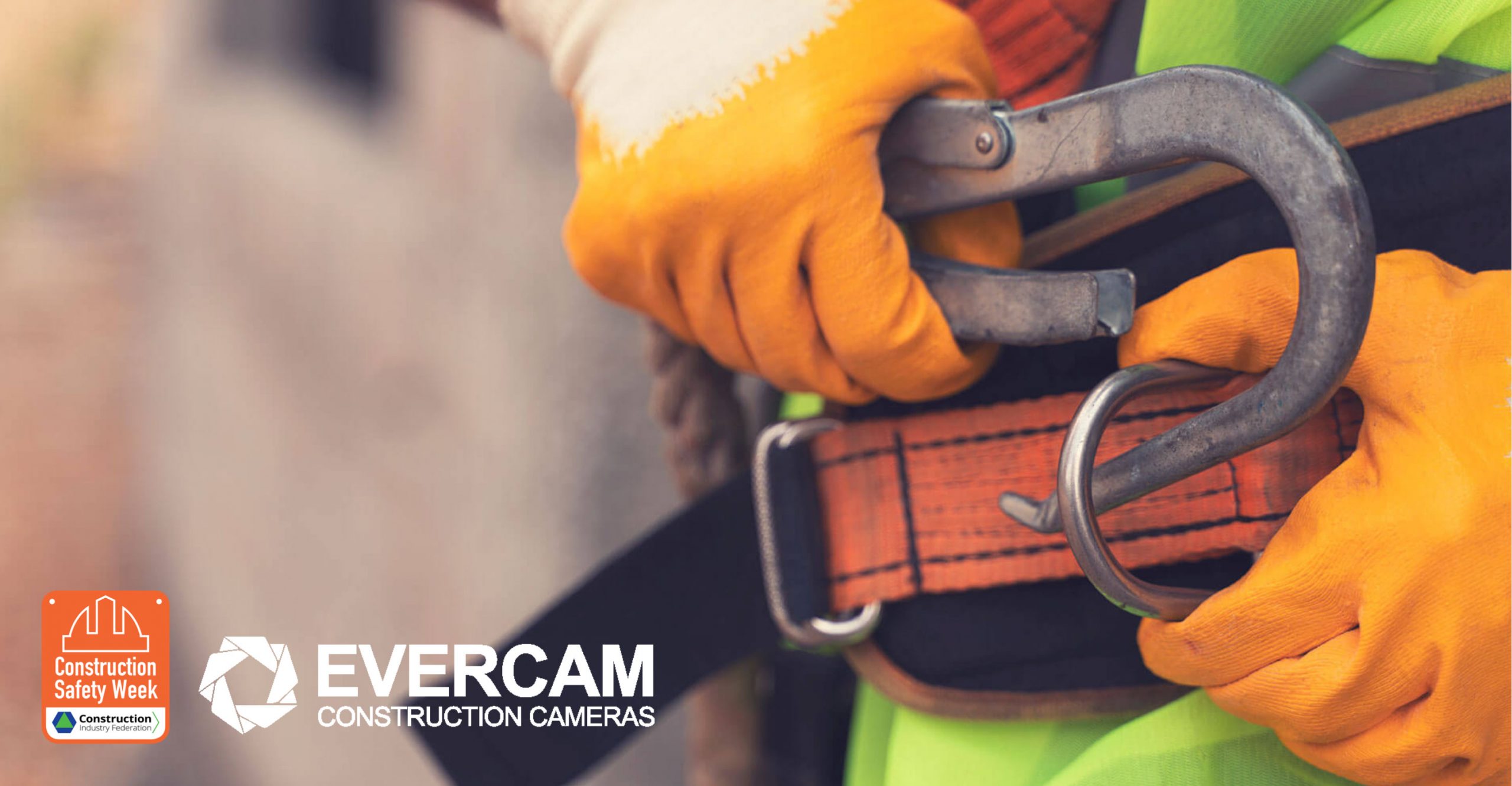
Construction Safety Week is a dedicated awareness campaign when construction companies throughout Ireland come together to focus on the mission of safety in the industry. This year, the safety campaign runs over the entire month of October to further spread awareness and drive engagement. Starting on October 10th, the emphasis has been placed on supporting the Lighthouse Club’s Help Inside a Hard Hat initiative. Then, during the next two weeks (17–28), there will be a focus on safety topics, including five days dedicated solely to job-site safety.
It is everyone’s goal to remain safe and in order to achieve this, communication and connection play a key role. With one of the topics for the Safety Week summit being modern methods of construction, technology like construction cameras remains to be a popular addition to construction site safety measures. Construction cameras ensure and continue to facilitate the connectedness of project team members, which is an integral part of completing a project safely and on time.
Construction cameras can play a major role in health safety adherence. Accidents on construction sites are almost inevitable and often end up resulting in lawsuits and hefty non-compliance fees as well. However, construction cameras can help regulate safety within job sites and can also provide you with a full video recording of accidents, near misses or other incidents that may happen on a project site.
Identifying Potential Hazards
Site managers are able to use high-definition construction cameras to monitor site activities and quickly identify any potential hazards in real-time and take immediate action to reduce the risk of harm. Cameras can help identify workers who are adhering to safety policies and regulations and those that could be disrupting the implementation of regulations. In the past, contractors and sub-contractors would have to physically be present at construction sites for monitoring. The ability to review site practices remotely also enables managers to handle two or more sites simultaneously, reducing the number of physical site visits needed, and saving time and money.
Transparency and Better Documentation
The use of cameras helps in obtaining accurate and real-time information, which can be used for assessment as well as reinforcement of the construction process and employee training. When information is available from the exact moment the accident happened, it makes documentation easier. This information is crucial for generating regular maintenance and safety reports and ensuring the overall safety of employees.

Accountability
The use of footage from construction cameras helps to tell whether the person in charge of safety regulations was responsible or how they can be held accountable. Construction job site cameras provide high-resolution, panoramic views of an entire construction site 24/7. Round-the-clock monitoring enables contractors to keep an eye on their site at all times. The footage helps deliver a clear picture of what happened and how the situation could have been prevented. This helps in identifying problem cases, which will ultimately improve OSHA regulations at the worksite. Off-site contractors can easily monitor the construction site in real time.
Cost Control and Reduce Insurance Premiums
Any damage to the construction equipment or employee injuries can be a huge setback in terms of cost and the progress of a project. Installing construction cameras can help with damage control. Properly maintained surveillance helps limit costs on insurance premiums. In the case of an unfortunate incident, the footage can provide strong evidence for your insurance claim.
Employee Protection.
Despite advances in construction safety equipment, technology and training, the construction industry continues to face high rates of fatal and nonfatal injuries and accidents among its workers. According to OSHA 1 in 5 deaths among U.S. workers is in the construction industry. US Bureau of Statistics records that of the 42 annual crane-related deaths, around 60% involve a falling object. Construction cameras provide video evidence in case there are any injuries that are a result of neglect in adhering to OSHA regulations. Fatal injuries can be prevented as the concerned authorities are able to react and respond in time. Cameras can create a culture of safety on site. Workers are more likely to follow precautions when they are being monitored. With a well-equipped camera installation, your workforce can rest assured that they are being monitored and therefore protected against any mishaps.
Tool For Health and Safety Training.
Camera footage can go a long way to provide insight into training. When trainees see an actual video of an event gone wrong, it becomes more effective than reading a manual on equipment safety. For example, if an accident happened, the footage could help pinpoint its cause. It can serve as a reference when developing interventions to ensure the same incident won’t happen again. Accidents could happen due to the operator not following procedures or not having been adequately trained. This information can also help site managers in coming up with a well-designed training program.
Construction cameras are already becoming an essential part of HSEQ, health & safety and project management teams’ workflows. Talk to us today about adding this technology to your company’s safety strategy.